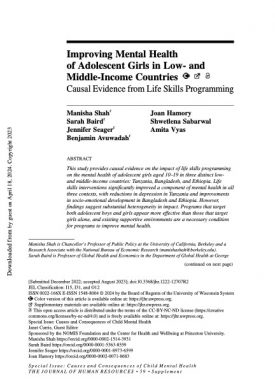In Nepal, adolescents comprise almost a quarter of the population (Ministry of Health et al., 2017) and almost half of all adolescents are girls. Investment in adolescents is important not only because of their sheer numbers but also to sustain the significant investment the country has made in child wellbeing and towards achieving the Millennium Development Goals (MDGs). Addressing the issues facing adolescent girls who lag behind their male peers will be a priority for Nepal in years to come.
While existing literatures have mapped programmes that focus on adolescents (see, for example, Stavropoulou and Gupta-Archer, 2017; Bakrania et al., 2018), we have limited evidence on how different interventions help to build girls’ capabilities, and under which circumstances. The objective of the broader GAGE research is to contribute to knowledge gaps on what works to develop adolescents’ capabilities and improve their wellbeing. The objective of this baseline study phase is to understand adolescent vulnerabilities in different capability areas and to help us assess, in the second phase, whether interventions are addressing key capability deficits for adolescent girls and boys. This report presents findings of a baseline study among adolescent girls and boys in Nepal.
Suggested citation
Ghimire, A., Samuels, F., Tiwari, R. and Bhujel, S. (2018) Gendered experiences of adolescents: baseline findings from World Vision’s Rupantaram adolescent lifeskills curriculum. London: Gender and Adolescence: Global Evidence.


